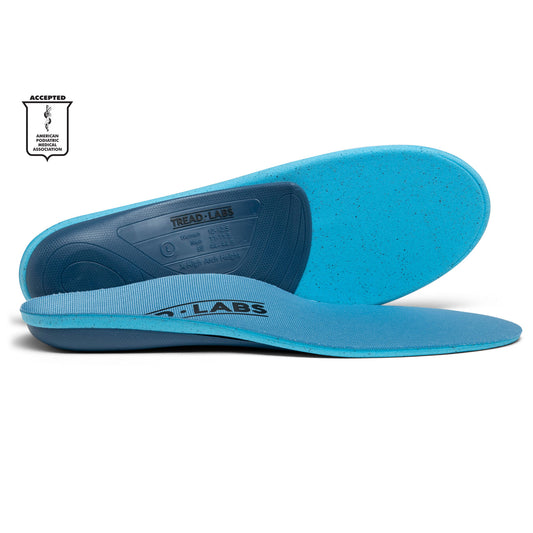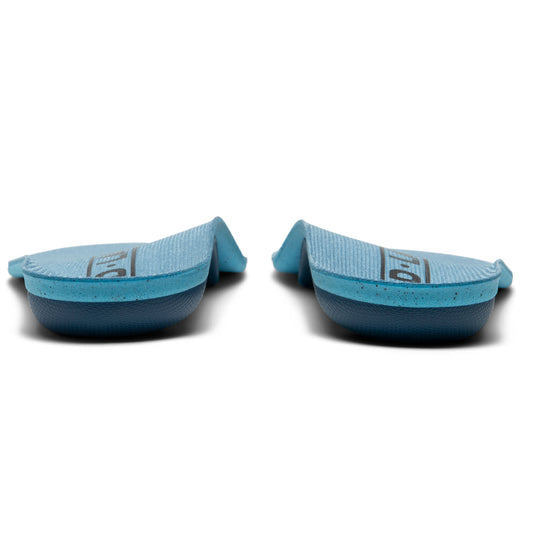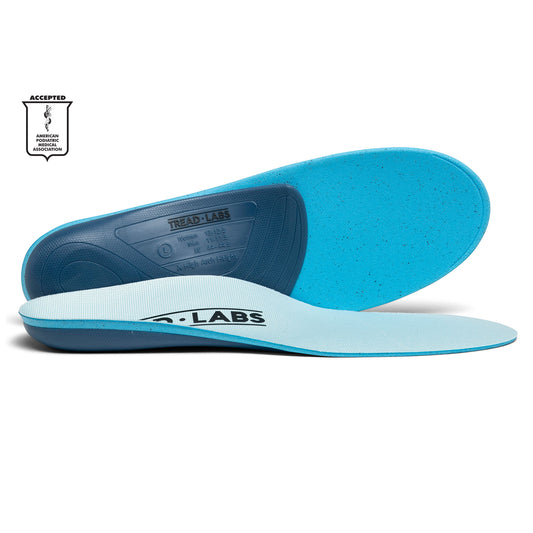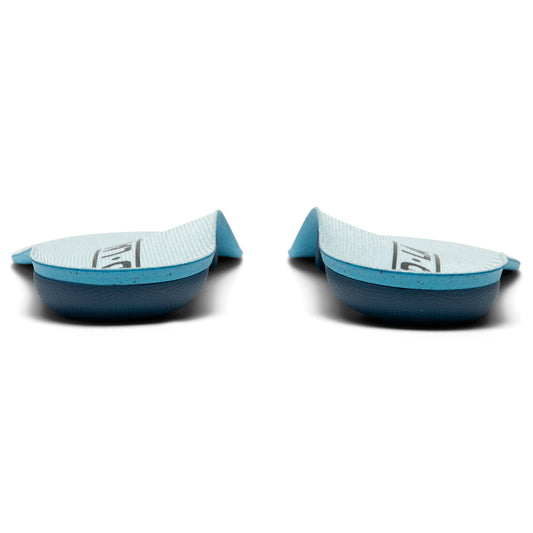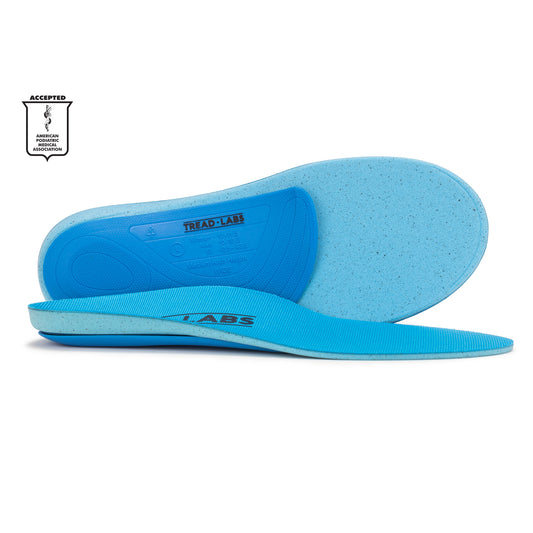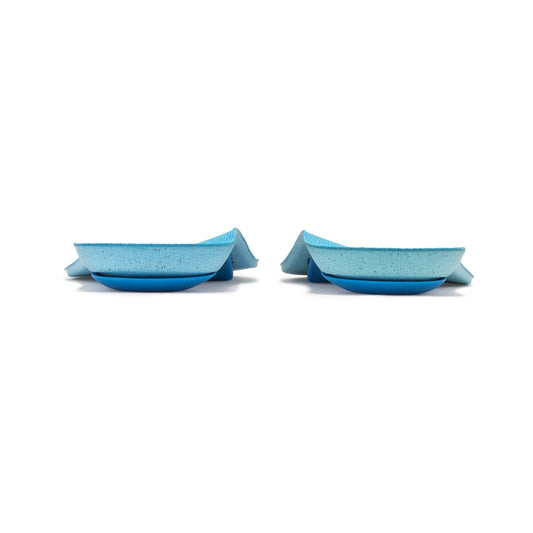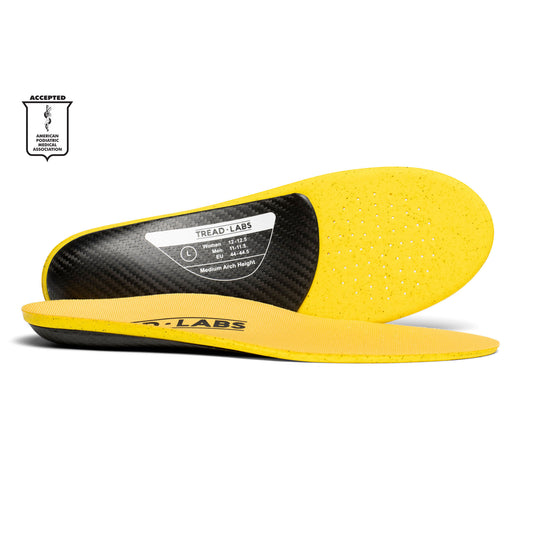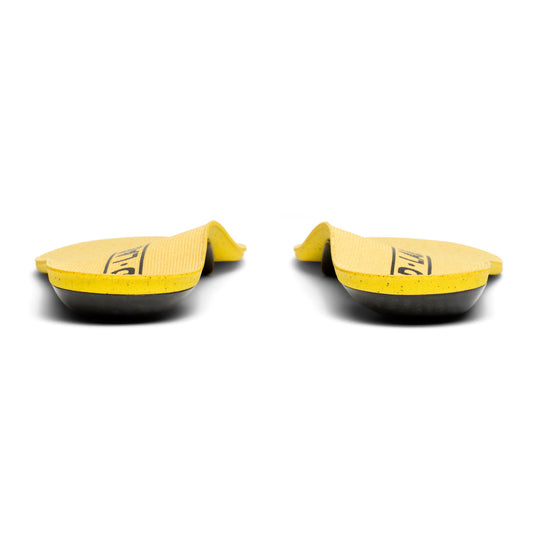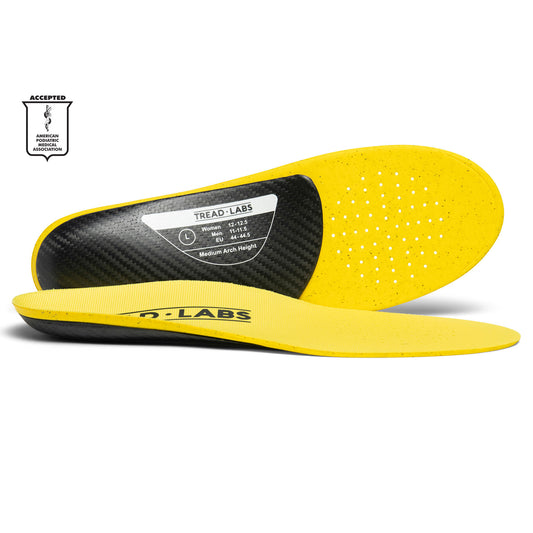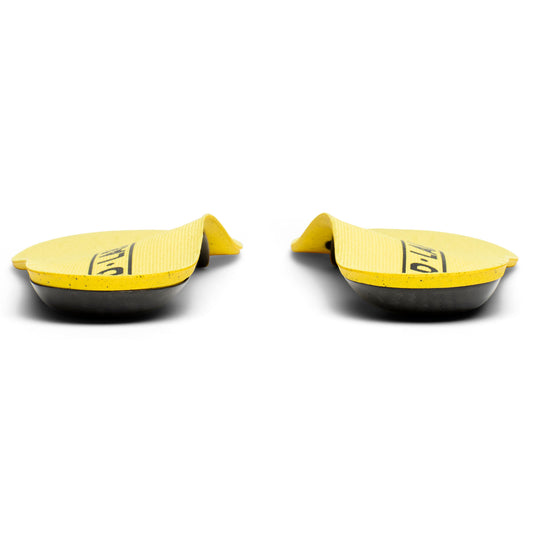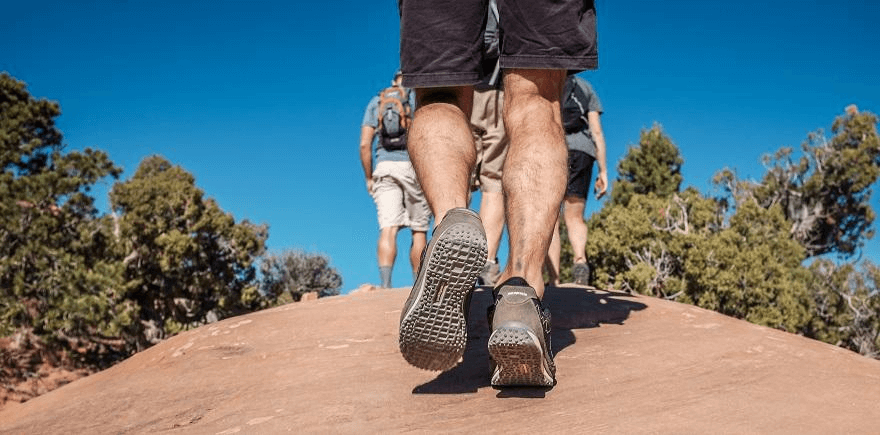
Insoles for Hiking: 3 Things to Consider Before You Buy
Hiking is all about fresh air, connecting with nature, and… blisters?
Going on a hike is an excellent form of exercise, but it can be rough on your feet. Taking step after step on rugged, uneven terrain can cause unpleasant friction on the skin of your feet while radiating painful vibrations through your arches and ankles.
If foot pain is threatening to keep you off of your favorite trails, it’s time to make a change. For many hikers, a pair of firm and supportive insoles is all that’s needed to make hiking pain-free again.
The Basics
- Hiking footwear typically comes with a durable exterior, but their interior is what you need to watch out for.
- You want to protect your feet from hot spots and blisters while ensuring you don’t irritate any foot issues like plantar fasciitis you might suffer from. These can make hiking in unpredictable terrain a painful experience.
- Adding Insoles for Hiking to your footwear can provide the arch support, shock absorption, and perfect weight redistribution needed to stabilize your heels and ensure pain-free footsteps.
Let’s cover all you need to know about hiking boot insoles for foot pain, including:
- Common hiking foot pain issues
- Hiking boots and arch support
- Firm insoles for hiking
Table of Contents
- Understanding the Most Common Hiking Foot Pain Issues
- Hiking Boots Typically Provide Minimal Arch Support
- Firm Insoles Are Best for Hiking
- Happy Hiking With Tread Labs Insoles
1 - Understanding the Most Common Hiking Foot Pain Issues

Hiking footwear is typically made with a durable exterior. The material is strong enough to slide against rocks, trudge through creeks, and push past thorny vegetation without ripping or wearing out.
Hiking boots are great for protecting your feet from the elements. Unfortunately, the contact between a foot and a boot’s interior can be less than gentle.
Feet are sensitive and hiking can be rough. Each step is different, as our feet twist, bend, and slap down repeatedly on rocky, uneven terrain.
Hiking can irritate any foot pain issues that you suffer from. Additionally, hiking can bring about other painful conditions, such as:
- Blisters
- Hot spots
- Plantar fasciitis
Pain from hiking can occur throughout the entire foot, as shown below.
| Hiking Foot Pain Issue | Part Of Foot |
|---|---|
| Blisters | Areas of friction throughout the foot |
| Pre-blister hot spots | Areas of friction throughout the foot |
| Plantar fasciitis | Bottom of the foot in the heel and arch |

Blisters and Hot Spots
Blisters are caused primarily by friction. During hiking, the skin of your feet rubs continuously against your shoes and socks, causing skin cells to become damaged over time.
Before you notice blisters, you might feel hot spots. A hot spot is a pre-blister state. As the skin stretches and nears a point of tearing, it begins to feel warm and tender. If friction continues, the body sends fluid to the hot spot to assist in healing the skin, forming a blister.
The friction from hiking is enough to cause some nasty blisters, but the warmth and moisture that are often present during a hike can make blister pain even worse.
Insoles can’t eliminate friction, but they can provide a softer surface for your foot to rest on. By reducing hard contact and redistributing the pressure of your footsteps, a pair of firm and supportive insoles promises major blister reduction for active hikers.
Plantar Fasciitis
Plantar fasciitis is another painful issue that commonly plagues the feet of hikers. This condition involves inflammation in the bottom of the foot. The pain is described as “stabbing” and occurs around the area where the heel meets the foot’s bottom.
The repetitive strain of hiking footsteps can cause or exacerbate plantar fasciitis. This is especially true for hikers with flat feet.
Flat-footed individuals tend to angle their feet inward. This strains the tissue that connects your heel to your foot (plantar fascia), sometimes resulting in plantar fasciitis.
If hiking irritates your plantar fasciitis, insoles can help. Firm insoles provide shock absorption and weight distribution, relieving the pressure that builds up over the thousands of high-impact footsteps you take while hiking.
”Great for hiking. I got these insoles to replace the stock insoles in my hiking boots… Hiking without the proper support isn't just a bad idea, it's painful!”
- Hiking Gal, ★★★★★ Verified Tread Labs Reviewer
2 - Hiking Boots Typically Provide Minimal Arch Support
The bridged area between the ball of a foot and the heel is known as the arch. Arches can be low, medium, or high.
If you have high arches, your arches don’t touch the ground. The weight of your footsteps is thus concentrated on the balls of your feet and your heels. This can cause a variety of issues, including plantar fasciitis, hammertoe, and tight calf muscles.
When arches are low or flat, the sole of the foot makes a great deal of contact with the ground. This can result in pain throughout the feet and legs.
Unfortunately, hiking boots typically provide minimal arch support. The surface that your foot rests on inside your boot is fairly flat and unforgiving.
If the lack of arch support in your hiking footwear is causing pain, add insoles. Doing so provides shock absorption and redistributes the weight of your footsteps. No matter the shape of your feet or the design of your boots, insoles can establish the perfect curve for pain-free footsteps.
”Finally, insoles that fit in my shoes. I have hiking boots and trail running shoes and run 5-7 miles several times a week. These are a..ma....zing.”
- SD Runner, ★★★★★ Verified Tread Labs Reviewer
3 - Firm Insoles Are Best for Hiking
Adding insoles to hiking boots provides arch support and stabilizes your heels.
Insoles can be cushy or firm.
The right insoles for your feet depend on what challenges you’re addressing, but insoles for hiking should generally be firm. Firm insoles are strong enough to withstand the rigors of hiking while protecting your feet from the pain caused by repetitive impact.
Firm insoles provide arch support that protects your feet against the heavy impact of hiking. They also contain structured heel cups that protect the heel area.
We recommend one of these two insoles for hiking:
Pace insoles are extra firm, while Dash insoles are ultra firm; i.e., provide maximum firmness and protection.
There are two parts to every Tread Labs insole: a molded arch support and a replaceable top cover. Top covers are easily replaced as needed.
Let’s compare the insoles you should consider for your hiking boots:
| Insole | Firmness Level | Top Cover Thickness | Best For |
|---|---|---|---|
|
Pace Insoles |
Extra Firm |
5 mm |
Plantar fasciitis pain, severe overpronation, heavy steppers |
|
Pace Thin Insoles |
Extra Firm |
3 mm |
Plantar fasciitis pain, severe overpronation, heavy steppers |
|
Pace Wide Insoles |
Extra Firm |
5 mm |
Wide feet, plantar fasciitis pain, severe overpronation, heavy steppers |
|
Dash Insoles |
Ultra Firm |
1.25 mm |
Flat feet, performance athletes, people who quickly wear out other insoles |
|
Dash Thin Insoles |
Ultra Firm |
3 mm |
Flat feet, performance athletes, people who quickly wear out other insoles |
Insoles are available in regular, short, thin, or wide sizes. When selecting your Tread Labs insoles, you’ll select your shoe size along with your arch height.
Choose from low, medium, high, or extra high arch sizes to select the insoles that will perfectly fit your feet.
Not sure of your arch height? Check this guide.
”I have tried different insoles but these are the real deal. If you follow the instructions on the website and choose the proper arch height you will not be disappointed.”
- Brent K., ★★★★★ Verified Tread Labs Reviewer
Happy Hiking With Tread Labs Insoles
If you’re looking for your first pair of insoles, we know it can be a bit confusing at first. To learn more about Tread Labs insoles, visit our Frequently Asked Questions page. You can also read more about hiking-related foot pain issues in these articles from the Tread Labs blog:
- Hiking Foot Care Guide
- How Should Hiking Boots Fit?
- Best Arch Support Insoles: What to Know About Shoe Inserts
- Plantar Fasciitis Insoles: Best Shoe Insoles for Relief
The molded arch support on every Tread Labs insole is built to last for one million miles and backed by our Million Mile Insole Guarantee. Tread Labs’ replaceable top covers typically last for around one year and are easily replaced.
”Other insoles I've tried haven’t been rigid enough, and tend to "give up" with repeated use. Tread Labs are both lighter and stiffer, and retain their shape perfectly over time!”
- Luke W., ★★★★★ Verified Tread Labs Reviewer
If you need some assistance in finding the right pair of insoles, feel free to contact our team any time. We’ll make sure you get the perfect insoles for your feet so that you can get back on the hiking trails ASAP.


